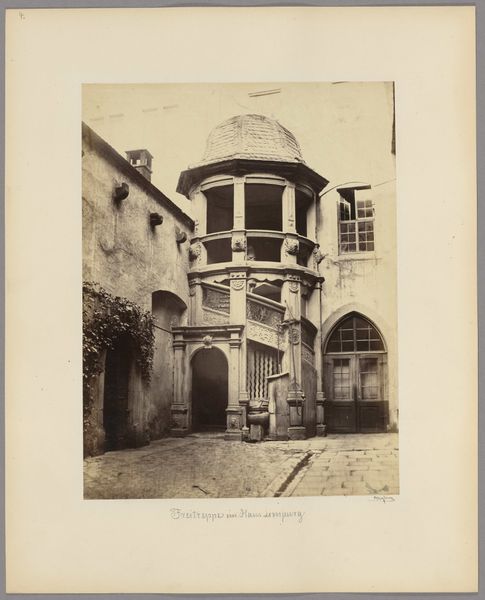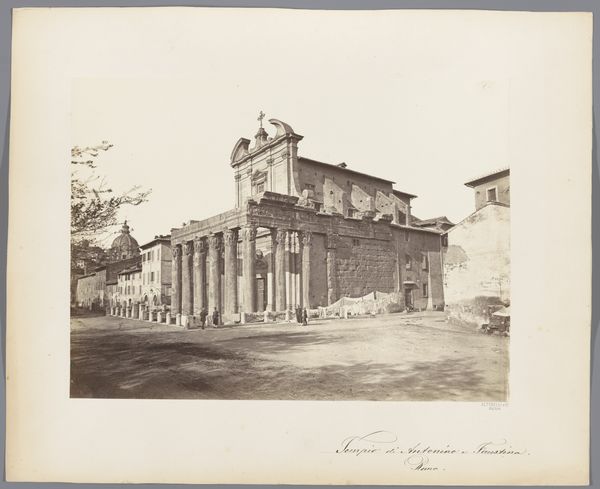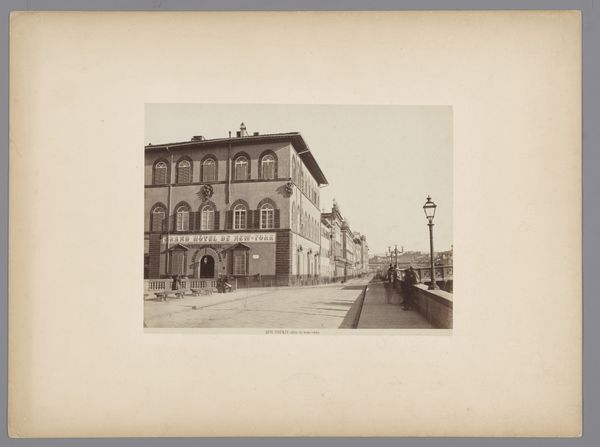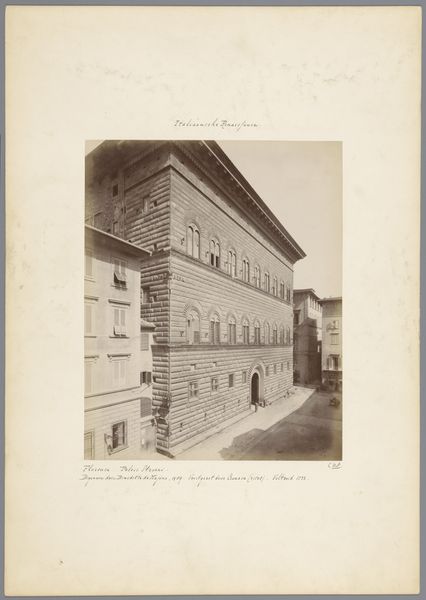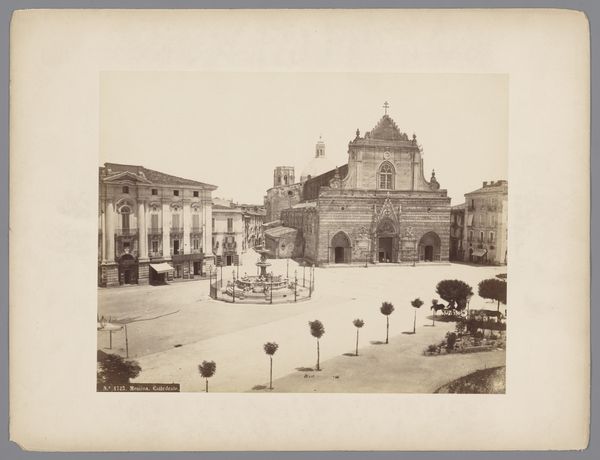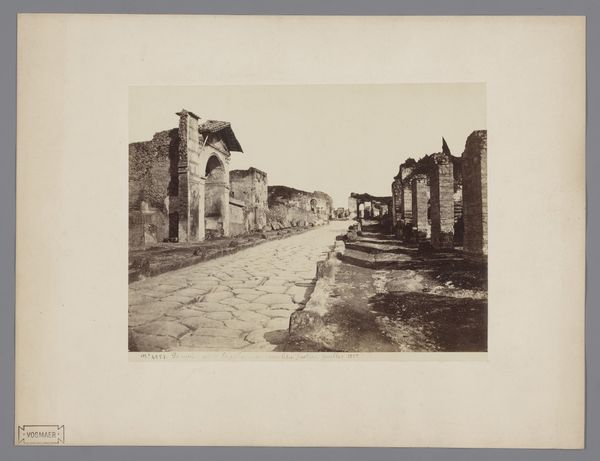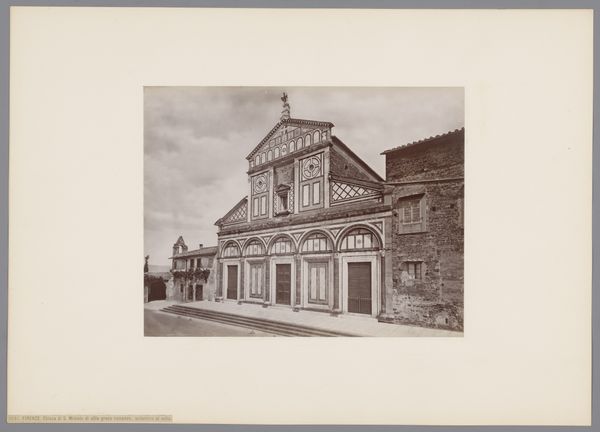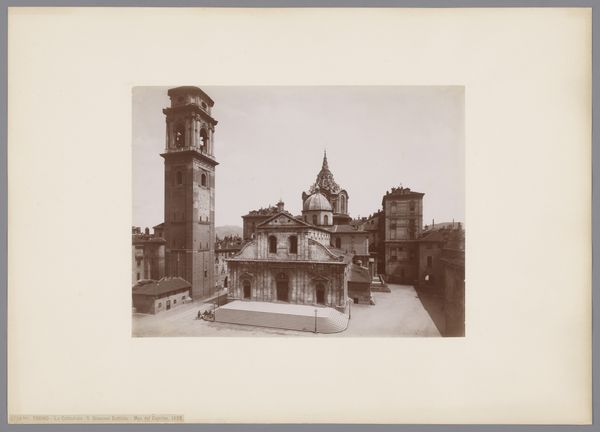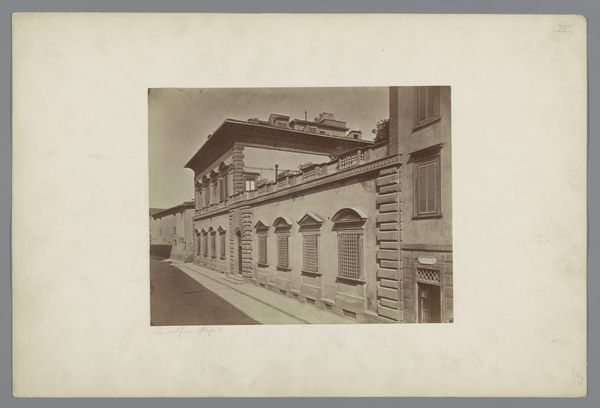
albumen-print, paper, photography, albumen-print, architecture
#
albumen-print
#
16_19th-century
#
landscape
#
paper
#
photography
#
cityscape
#
italian-renaissance
#
italy
#
albumen-print
#
architecture
Copyright: Public Domain
Curator: Looking at this, the architecture feels so...sturdy. Editor: Yes, the sepia tones lend it a somber air, don't they? Let me introduce what we are looking at. This is an albumen print dating back to circa 1860 by Pompeo Pozzi. The image, held at the Städel Museum, is titled "Milan, Rear Side of the Church of Santa Maria delle Grazie". Curator: Ah, Santa Maria delle Grazie. Seeing the apse from this angle... it evokes the immense power the Church held in Milan, not just religiously but as a socioeconomic force. Editor: I am struck by the octagonal drum supporting the dome – those layered arcades. In symbolic terms, the circle signifies heaven, divinity... here multiplied and raised heavenward. The windows, like vigilant eyes, watching over the city. Curator: And the streets themselves – see how empty they are? This enforces the power dynamic even further. This stillness suggests control, perhaps even a silencing of dissenting voices. It's a cityscape that implies more than what's visible. It speaks to gendered spaces and race perhaps erased through a hegemonic lens. Who occupied these streets, and who did not? Editor: It's also an interesting dance between architectural stability and urban transience. This area has obviously undergone many transformations, and even if this image represents a fraction of it, one could extract multiple narratives, no? I agree this invites so much more reflection on urban experience in 19th-century Milan. Curator: The deliberate use of albumen, though technically of its time, contributes too to its social context. This style of architectural documentation would contribute to the "creation" of Renaissance. Editor: Yes. This single photographic print holds such a complex network of visual and social data. The photograph becomes a powerful mirror, and perhaps even a compass, directing our understanding of symbols and the built world. Curator: Looking at Pozzi's work here, I feel that as interpreters, we are ultimately challenged to deconstruct these imageries that contribute in some sense to a narrative with specific societal intent. Editor: Absolutely. It allows us to explore cultural memory through visual language, and to reveal continuities in symbolic form.
Comments
No comments
Be the first to comment and join the conversation on the ultimate creative platform.
